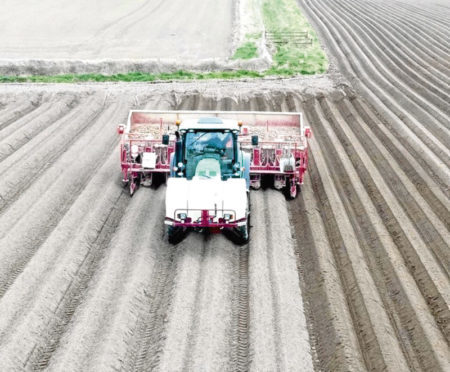Farmers need to break away from the idea that bigger is better when it comes to agricultural machinery if the UK is going to become more profitable and productive.
Simon Blackmore, professor of engineering at Harper Adams University, said crop production has to become more flexible and efficient if farmers are going to drive profits and yields.
And he said ditching large machinery in favour of lighter, smarter kit will be key to shaking-up farming systems and ensuring food production is more sustainable.
Speaking at an AHDB and Food and Farming Futures conference, Professor Blackmore said large machinery was one of the major weaknesses in current production systems.
While large tractors have enabled work rates to increase through economies of scale, they use large amounts of energy, cause soil damage through compaction and don’t apply chemicals as precisely as they could.
What’s more, while they may have driven efficiencies, they have rarely increased yields – something smaller, more intelligent technology could do, Prof Blackmore said.
“We need to break out of thinking that bigger is always better. 90% of the energy going into cultivation is there to replace the damage cause by machinery,” he said.
“Small automated machines can work in small fields, so that means we have opportunities to increase production sustainably.”
Prof Blackmore said there was a raft of ultra-light machines under development which would make huge improvements to soil conditions and farming practices.
Harper Adams’ own hyper-weeding project, which uses vision-guided technology to recognise and treat weeds with heat or precision spray booms, saw chemical inputs fall by 99% in trials, he said.
Meanwhile vision-guided technology was also being developed to enable selective harvesting in horticultural systems, ensuring crops are only picked when they reach optimum market conditions.
“When crops are harvested at once up to 60% of the crop is not of a saleable quality, so we need to phase harvest,” he said.
“By grading a product at the point of harvest, it means that we increase the crop’s yields, but also add value for the producer before the product leaves the farm gate.”
Prof Blackmore said he was currently looking for investment to bring these technologies to market.
“If we can move towards more flexible manufacturing we can react to changes in real-time,” he said. “If we can identify strategies to do that we can develop proper supply and demand systems which could ultimately add value to the producer.”
